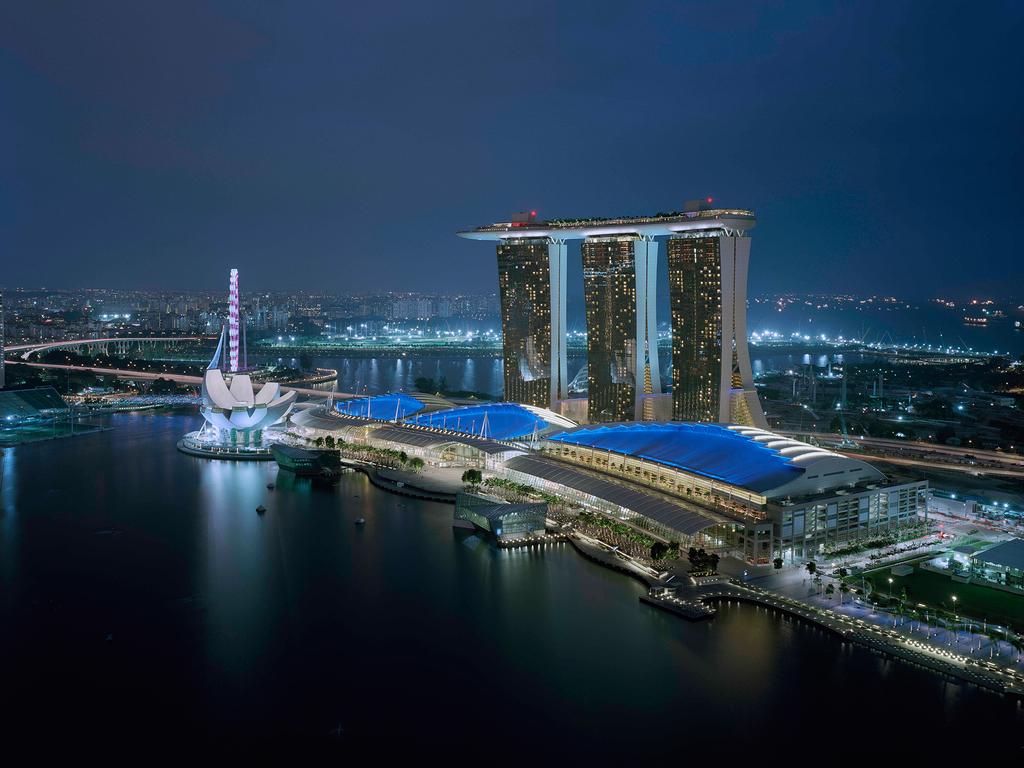Marina Bay Sands Asking Lenders for Almost $6 Billion in Singapore, May Have Its Work Cut Out to Reach Goal
Posted on: June 17, 2019, 05:17h.
Last updated on: June 17, 2019, 05:17h.
Marina Bay Sands — the Singapore casino operator that is a unit of Las Vegas Sands Corp. (NYSE: LVS) — is looking for up to $5.86 billion in financing, its first visit to the loan market since 2012, and one that’s expected to test the risk tolerance of potential lenders.

The company last sought financing for the gaming property seven years ago when it borrowed $3.71 billion from a group of 28 lenders. Las Vegas Sands (LVS) previously announced expansion plans in Macau and Singapore, which are two of the most lucrative markets for the company.
Earlier this year, Sands said it’s aiming to inject $3.3 billion into Marina Bay Sands.
Sands wants to raise $2.91 billion to build a fourth tower at Sands Marina Bay — the company’s most profitable integrated resort — as well as amendments and extensions to previous financing, according to Reuters.
That addition could open by mid-2023 and contribute over $900 million in revenue by 2024 if it becomes a reality.
LVS has previously extended maturities on the first round of financing in Singapore twice. In 2014, the company was able to push those on the debt to 2020 and last year, the gaming operator was able to further extended them to September 2023 and March 2024.
Appetite For Risk
Sands has about $2.91 billion to be repaid on the capital it procured in 2012 and it’s expected that the casino operator will need to work with multiple banks and lenders this time around to attain the financing it desires for its Singapore property. Borrowing another $5.86 billion could prove tricky in Singapore.
The borrower has not raised such a size before and it is also unprecedented for the market in Singapore,” an unidentified bank told Reuters.
Moody’s Investors Service has a credit rating of Ba1 on Sands — the grade the agency has had on the gaming giant since late 2015 — with a positive outlook. Bonds carrying one of the three Ba ratings from Moody’s “are judged to have speculative elements and are subject to substantial credit risk,” according to the ratings agency.
Earlier this year, Moody’s said Sands’ plans to expand in Singapore were “credit positive.” Still, LVS could encounter some headwinds when it comes to landing this batch of financing: some banks headquartered in Asia have policies barring loans to casino operators.
Additionally, some insiders believe new lenders will not rush to join the syndicate to fill Sands’ Singapore loan, meaning the company may have to tap borrowers it has established relationships with for more capital.
“I don’t expect a significant number of new lenders joining the deal because the borrower has already combed the market in the past,” another unidentified banker said in an interview with Reuters.
Japan Connection?
Sands’ plans to expand Marina Bay Sands come as the company is pursuing one of Japan’s highly prized gaming licenses. LVS could be looking to use Singapore as way of reminding Japanese regulators of its operational superiority in Asia.
Some market observers believe Japan wants to follow the “Singapore model” when it comes to gaming properties, which could benefit financially sound companies such as Sands rival Genting Singapore Ltd., which is also planning a $3.27 billion expansion of its Resorts World property in Singapore.
While Sands is the largest US casino operator by market value, it is heavily dependent on Asia as a profit driver. In the first quarter, LVS generated earnings before interest, taxes, depreciation and amortization (EBITDA) of $1.45 billion, with Singapore contributing 29 percent.
Only Macau represented a larger chunk of Sands’ first-quarter EBITDA.
Related News Articles
Most Popular
Mirage Las Vegas Demolition to Start Next Week, Atrium a Goner
Where All the Mirage Relics Will Go
Most Commented
-
Bally’s Facing Five Months of Daily Demolition for Chicago Casino
— June 18, 2024 — 12 Comments
















No comments yet